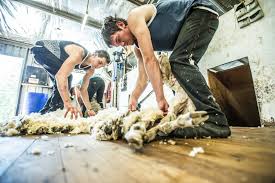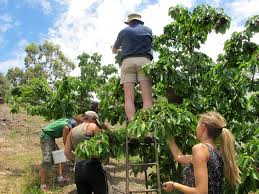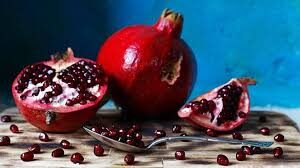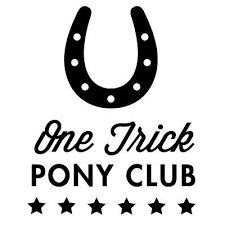After managing the responses to the Christchurch terrorist attacks, the White Island volcano and a pandemic — not to mention the birth of her first child — (Jacinda Ardern) has become a global standard-bearer for a progressive politics that defines itself as compassionate and competent in crisis.

So spoke the New York Times after Jacinda Ahern’s landslide election win last Saturday. Let’s face it, she was a refreshing breeze at a time when there had been some dodgy females hogging the headlines in Australia. I get sick and tired of the mantra that women do not get a fair go. These women have demonstrated that they are no different from men. The one qualification is that I have never seen women politicians flogging stuff out of their parliamentary office. However, Darryl Maguire is not on his pat as a male if the species in running a two-dollar store out of his parliamentary office
The current problem is that having convenient attacks of amnesia seems to be the most valued commodity in public life whether it be female or male.
In my first blog, which I wrote 83 weeks ago before all that was recounted above occurred, I wrote: “Yet Jacinda Ardern gives me hope. Her words – her demeanour of grace, compassion, resolve, her ability to call out the bully – the courage of making herself a target for all the “unspeakables”. She is indeed a paragon.”
However, there is a squad of chaps who do not like her. I was criticised for blind adoration. Yet one of her great assets is a supportive partner, a person with presumably “selective” adoration.
The brutality of politics is reflected in that her hapless opponent was nick-named “Crusher”, and yet the woman seemed to revel in being called that.
Now the New Zealand election is out of the way, there is the opportunity for our horse-drawn politicians to recognise – as the rest of the world has done – what a contemporary and significant stateswoman she is. She has been the equivalent of a wartime leader in her approach to disasters which would have defeated a lesser person.
The laughable attacks on her last week by an alleged apologist for the Australian security service and the political remnant of Mary Knoll makes one ashamed to admit to the same nationality as those other elderly jokers.
Now, Ardern can get down to work to try and transfer her qualities into the deeply corrupt Australian society. I thought I would never say that we could ever learn from a Kiwi.
As one commentator has written, the liquidity has caused a surge in real estate market prices in New Zealand, particularly Auckland. Hopefully, this will encourage her to abandon the KiwiBuild scheme, which seems to be a remnant of “Rogernomics”, and spend the money directly on much-needed social housing.
Improved contact, whatever you call it, with Australia is also essential. How the two countries deal with the South Pacific and the incursions from the Northern Hemisphere countries will be a critical test. However, before that there will be wool.
All that superficial crap highlighting tearful family reunions around “the bubble” hides the fact, which I noticed driving around NSW this week, that there are a lot of sheep that need to be shorn. With a shortfall in our shearing workforce, Australia needs shearers. The shortfall is generally made up by 500 New Zealand shearers. Until the TransTasman bubble was developed in the last couple of weeks, there was a deterrent in the high price New Zealand shearers had to pay for working in Australia, with their own fares and quarantine arrangements estimated at A$10,000.

A gun shearer can earn $150,000 in Australia if they average 200 sheep a day. New Zealand shearers are considered high quality and readily employed by shearing contractors so it should be attractive for them to work in Australia, especially now they are able to enter Australia freely.
Let’s hope that we adapt now to developing a better collective arrangement, instead of a perpetual Bledisloe Cup attitude between the two countries. It is time in the aftermath of COVID-19 to lay down our scrums and get to work. I am sure Ardern is up for the challenge. Not sure about the Australian Prime Minister, but then November 3 may change him – or not.
It Could be a Lot of Rot
There is extensive fruit and vegetable picking work available in Australia. The Australian Bureau of Statistics estimates about 140,000 people are employed in this industry every year. In fact, many people travel the country working the ‘harvest trail’ which sees them in employment all year round. This is because they know when and where the harvests are and move from one harvest to the next.
For many years, I worked in North-east Victoria right in the heart of the orchards and fruit picking. I witnessed changes in the industry during my time.

There is no doubt one of the most tranquil moments is walking along the lines of pear and apple tree with the emerging fruit. There is a calmness in the ordered lines of greenery and the rilled earth and grass along which you walk.
It was sad to see the tree pulling, which left that Acadian stroll of my first years an empty paddock.
During that time there were changes in the industry. The rise of the farmers’ market meant that there was a new appreciation of fresh fruit. The decline of canned fruit as a major component of the Australian diet meant that apricots had already fallen out of favour with the orchardists before I arrived there. The cling peaches beloved of the canners are far from being the best eating variety.
The then chair of the local health service came from a line of orchardists and the family enterprise was a major economic driver in the town, together with tourism and the now defunct milk processor. His view of the workforce was that he had the itinerant pickers who worked from harvest to harvest. They came year after year – fruit picking generally commenced in November with cherries and apricots, but the major fruit were first, the stone fruit – nectarines and peaches followed by pears and apples until late April to early May.
This was a separate cohort from those employed to pick grapes as the region is a substantial wine producer with the grape picking reaching a peak in February.
My expert friend was not particularly positive about backpackers, because they would come and leave after a few days. The problem is that the media generally turn up on day one rather than, say, day 70 to photograph the “happy campers”. The attrition rate was high, he said. The orchardists need a steady work force not a group of young people flitting from place to place.
When I was young I myself did a variety of vacation jobs – working in a wool store, reading electric light meters, working as a storeman, a guard on armoured cars, gardening, pathology laboratory assistant, working as a clerk among first and second war veterans in the then Repatriation department, spotlight worker. There may be others that I forget, but I know I never went fruit picking, which I regret.
One of the strengths of working in these jobs is you learned the vernacular of being an Australian worker, essentially at a time when unionism was strong. This was important when you were a doctor and your patients were essentially working class, as those of my father were.
There is a growing complexity in the horticultural industry, because one business model does not necessarily encompass the whole of horticultural harvesting.
Some politicians who undertook compulsory national service (or more likely received an exemption) in a different era now champion putting “these young blighters” to work in some sort of revived “Nasho”. However, there will be some smart young person, who will see a place for a scheme which harnesses the workforce in the gig economy to perform this kind of work. Yet the politicians have allowed a generation of young workers to be pushed into the gig economy, whether they wanted to be there or not, and now may be the time for those in the gig economy to organise themselves – they have the means to do so.
It is a fallacy to believe that the young are not entrepreneurs.
Given the appropriate incentives they could develop business models for efficient fruit picking or for that matter the whole area of horticulture.
In forming the business plan, there are a number of hurdles to address. How do you marshal a workforce with tertiary aspirations, yet where the vacation coincides in substantial part with the fruit-picking season; and yet where the delights of the flesh and the necessity to work are in conflict.
Fruit picking as a business exercise should not be left to the labour contract companies, which the COVID-19 pandemic has shown to be both predatory and incompetent.
Fruit picking as a youthful enterprise, with the instincts of a co-operative work force, requires consideration in that balance between government subsidy and impost on one’s future career. Therefore, the business must ask the question of how much and whether in the end it fills the gap between the two.
The female and male workforce, price, availability, reliability, capacity needs to be assessed and negotiated. In the end are there enough young people prepared to pick fruit effectively and efficiently?
There are a number of reservations, and that is the sustainability of the industry, and because it is so varied and seasonal to develop the flexibility. I remember my orchardist friend pulled a substantial number of trees and replaced them with freezing storage units, because there was a significant demand for such facilities. That was business.
Tastes change.
When I was young, one of the treats was having snow apples. They grew in cold climates and I last had them about 15 years ago; they were growing in a vineyard in the Victorian Pyrenees. Once grown commercially, they suffered from a lack of reliability and resilience, which gave them a short season and besides, they did not store well.
For the growers, profitability is aided if the need for manual harvesting is removed. One industry which has completely removed the need for manual labour is the sugar cane industry. That has occurred in my lifetime.

As another instance, the number of almond trees that have appeared where once there was only a dried fruit industry along the Murray river has meant that with the rise of the almond and with mechanisation of their harvesting there is no need for a labour force. Similarly, just outside Leeton there is huge acreage being given over to walnut trees. Again, no manual harvesting. It highlights the need for a workforce that is both agile and responsive.
I know if I were younger and had lived in a “horticulture”, I may have tackled this task, but I am not. Still, it is a challenge because, as I said, tastes change. I remember when I was reviewing a small health service on the Victorian border, I innocently mentioned that I was growing pomegranates. The response I elicited was somewhat comical. The man was about to invest in “serious” pomegranate tree planting. It was a time when Australia had just discovered the delights of the pomegranate, and he immediately thought I was there to “case” the place for pomegranate investment rather than reviewing the health service. When I said I was only planting a couple in my back garden in Sydney, he visibly relaxed.

As an epilogue, pomegranates must be removed from the tree using clippers or secateurs, from March to May. The stem of the tree is strong and thick; fruit cannot be pulled from the tree without damaging the fruit and/or tree. There are no mechanical harvesters. Some of the growers have small acreage and have banded together to form de facto co-operatives to avoid employing pickers. However, as the southern hemisphere only supplies one per cent of the world’s production, the potential should be large for out-of-season export to the northern hemisphere. Ramping up production will require a workforce to pick the pomegranates as they are not the easiest to harvest.
Over to you guys.
մոգ pronounced mog

Armenians, it was once said to me, are the shrewdest business people after the Bengalis. Armenians can weave beautiful intricate carpets. Armenians have been Turkish punching bags. Armenians, if nothing else, are survivors. One of my favourite songs is linked to that great Armenian troubadour Charles Aznavour. The song? “She”.
She, Gladys Berejiklian, also has strong and proud Armenian heritage, clear in the retention of her surname. She has cultivated an image of saintliness trying to emulate the many Armenian saints within the Armenian Orthodox Church that as reported she attends regularly.
My encounter with Gladys was when she was the newly-elected member for Willoughby. She came to a dinner where I was the guest of honour. She was late and was brought along by the host of the dinner to be introduced to me. Before that could occur, she saw somebody who must have been so important that she was totally discourteous and totally ignored me, despite being brought to specifically meet me.
I was surprised but then the Italian have a word for it –menefregismo. The barista not looking at you as he pushes the coffee in your direction while talking to a mate at the bar is an example. When it is combined with furbo, which has many interpretations but suggests a person on the make, then it perfectly described Berekjikian that night – except she is a furba to acknowledge her gender. After all – fare la furba – is to jump the queue.
Despite that first impression, if I thought about her which was not often in the intervening period, she seemed superficially to be assiduous and competent.
This year, however, you could not get away from her, because of the series of incidents. I noticed a characteristic, which underpins her authority. She can talk for long periods without saying: “um” or “ah” or any hint of hesitation. It was a trait that I remember a certain English teacher trying to instil into us boys, and for years, there was a BBC radio show called “Just a Minute” where the panellists were given a subject and had to talk for a minute without hesitation, repetition – a variation of not saying “um or “ah”.
It became clear that even when she was very wrong, as with the Ruby Princess, this ability to talk without hesitation gave her an air of authority and her escape hatch from admitting error.

It is amazing how a one trick pony has gone so far, but it may be argued when coupled with that of her immaculate conceived persona that she has been very important to her Party when underneath her feet is a swamp of indeterminate depth inhabited by all sorts of creatures, those that grate and those that appal.
The immaculate sparkle has gone. Yet one of her Ministers, in a stumbling defence, said she was married to NSW. Needless to say, how that could be interpreted in the current soap opera obviously escaped him.
At least, NSW has been spared that agonisingly ambiguous statement of the politician under stress: “I am going nowhere.”
I await the first hint of hesitation in her voice, but maybe that occurred with Kyle Sandilands. Then some may be said to have standards which do not include parsing his utterances and her replies.
I have to admit she did sign the gift I received at the dinner and still treasure – a magnificent book on Aboriginal Art.
Chloroquine studies are alive and well in Parkville
There is still one study in Australia into whether taking hydroxychloroquine can help prevent health care workers getting COVID-19 in the first place. And the jury is still out on that one.
What an interesting take by the intrepid Paul Barry. He had spent extensive time in his “Media Watch” two weeks ago bagging that comedy duo, Bolt and Dean, for their advocacy of the use of hydroxychloroquine in the treatment of COVID-19.

I expressed concerns months ago that funding had been provided to the Walter and Eliza Hall Institute of Medical Research (WEHI) to test the prophylactic use of this drug for health workers. The hypothesis I thought threadbare, and subsequently, the evidence against its use has become overwhelming. Barry interviewed Steven Tong from The Doherty Institute who had stopped a trial on the drug’s usage, and used the word “rubbish” in defining the further investigation in the use of the drug.
Even Donald Trump has disavowed its usage, and Barry played an excerpt of recent footage of the President to back up that contention.
So why his curious form of words suggesting that health workers are a separate entity, otherwise why in Barry’s words is the jury out, when he had just demonstrated that the jury had well and truly delivered the verdict of it having not only no effect but also potentially dangerous.
I sent an email to Mr Barry, but he seems to have learnt from his usual quarry of spivs. Just ignore and hope I would go away. However, over my long life in which I have been exposed to many journalists – their worse outcome is to lose objectivity and begin to be believe in their self-beatification.
For the record, I’ve published below my last letter to WEHI, after I had a very swift response to my first letter. Note that I have had no response in the interim 3 months plus, when much has happened to further discredit the use of the drug.
The problem is this drug can potentially kill, for what? WEHI had assembled a cheer squad asserting the worthiness of this study. I was assured that the funding was totally derived from government, although WEHI had admitted accepting money for COVID-19 from a Chinese company, which has been under governmental investigation for business malfeasance.
I made sure that copies of my correspondence were sent to both Brendan Murphy and Anne Kelso, the Chief Executive Officer (CEO) of NHMRC. Needless to say, they have shown no interest.
I have published that letter, unabridged below. I hope that community and peer pressure will stop this pointless exercise. I canvassed the study with certain sources outside the WEHI claque, and one comment was telling – how concerned he was in the decay of a once great Institute. Not my view as yet.
Perhaps, Mr Barry, you could clarify further why you made that comment, when you were so definite in criticising it elsewhere in you program. Have you an undeclared link with WEHI? Unfortunately I don’t have my own “Media Watch” to keep you up to the mark.

I’m sorry, but at this stage, I am disappointed. Below, my last letter of 27 June 2020 to Prof Doug Hilton AO, Director, WEHI:
Dear Professor Hilton,
Thank you for your very prompt email. Your direct response in relation to the source of funding for the study is instructional for those who obfuscate, however unintentional.
I am very sympathetic to the plight of research institutions in raising funds, but raising expectations, as you would realise, is two-edged. I am somewhat concerned by some of the reports emanating about putative cures because there is already a scepticism in the community about science, which has led the dark fringes of society exploiting anti-science attitudes in the community. This situation is always aggravated when expectations fall short.
You are very disappointed by my linking the Trump support for hydroxychloroquine, but the message received is as equally important as that sent. I do not question that Pellegrini and Wicks had constructed a hypothesis, but its construction when there is already controversy as to its use obviously raises question of whether the publicity created did not play a part in the government making available funding.
I’m alarmed, as you must be, by the apparent renewed support by Trump for its usage even after the FDA’s July warning on its safe use, on the advice provided by Dr Stella Immanuel, whose other ideas are bizarre to give the most generous interpretation. Given how increasingly difficult the situation is becoming you may wish to reconsider the WEHI position, given any association with this Dr Immanuel’s idea would not benefit WEHI.
It is for you as Director to determine its priority in the overall research program if MRFF funding had not been made available. That the availability of funding was not influenced by political considerations, at the time when hydroxychloroquine as a cure was being so widely promoted, was at the tie partially answered in your response.
I note that the study is subject to interim analysis and look forward to its release.
I note that the study has rheumatologists and other lines of support, I am not sure whether my requests have been answered so that I am not personally reassured, in particular concerning the safety of the study. However, for the time being I shall accept your assurances.
In relation to your final paragraph, I have read your annual reports and periodic bulletins – and I understand you have had some spectacular results that have resulted in profitable collaboration with the private sector. However, may I make a couple of points: you refer to my being a medical doctor, but I also suffer from a chronic autoimmune disease, and therefore mine is not a detached interest.
Also in relation to the therapeutic effect of hydroxychloroquine, as I have written elsewhere, the drug was essential in treating the malaria that I contracted in Madagascar over 30 years ago. It was a nasty experience; fortunately I have never had a second attack. But that was malaria, a recognised use for hydroxychloroquine!
From your response you are far from the “the simple protein chemist” as you describe yourself. Your response is impeccably drafted, apart from your use of “principle”. My principal committee I assure you was principled.
My kind regards
Jack Best
As someone said, the first death of a health worker in this study will see a scattering of support for the study, which would test even the best “Outback ringer” to catch.
Watch this space.
Mouse Whisper
Hickory Dickory Dock
“The way he kisses dictators’ butts. I mean, the way he ignores the Uighurs, our literal concentration camps in Xinjiang. Right now, he hasn’t lifted a finger on behalf of the Hong-Kongers,”.
“The United States now regularly sells out our allies under his leadership, the way he treats women, spends like a drunken sailor. The ways I criticize President Obama for that kind of spending; I’ve criticized President Trump for as well. He mocks evangelicals behind closed doors. His family has treated the presidency like a business opportunity. He’s flirted with white supremacists.” …
“But the reality is that the President careened from curb to curb. First, he ignored Covid. And then he went into full economic shutdown mode. He was the one who said 10 to 14 days of shutdown would fix this. And that was always wrong. I mean, and so I don’t think the way he’s led through Covid has been reasonable or responsible, or right.”
The author of these statements? Senator Bernie Sanders? Any other Democrat?
No, it was the junior Republican senator for Nebraska, the anti-abortion, anti-Affordable Care Act, pro-gun, anti-impeachment Senator Bill Sasse.
Yes, he may have said it in a whisper, but let me say it was a courageous whisper across the Pawnee National Grasslands of Nebraska.

